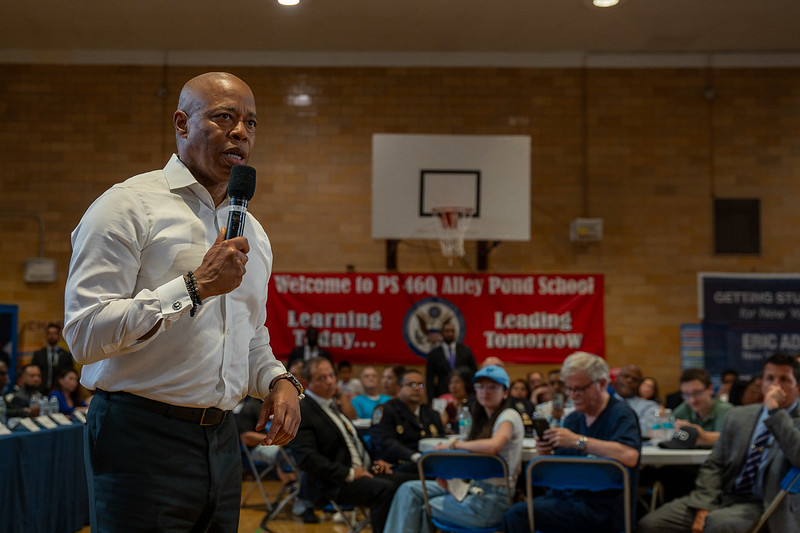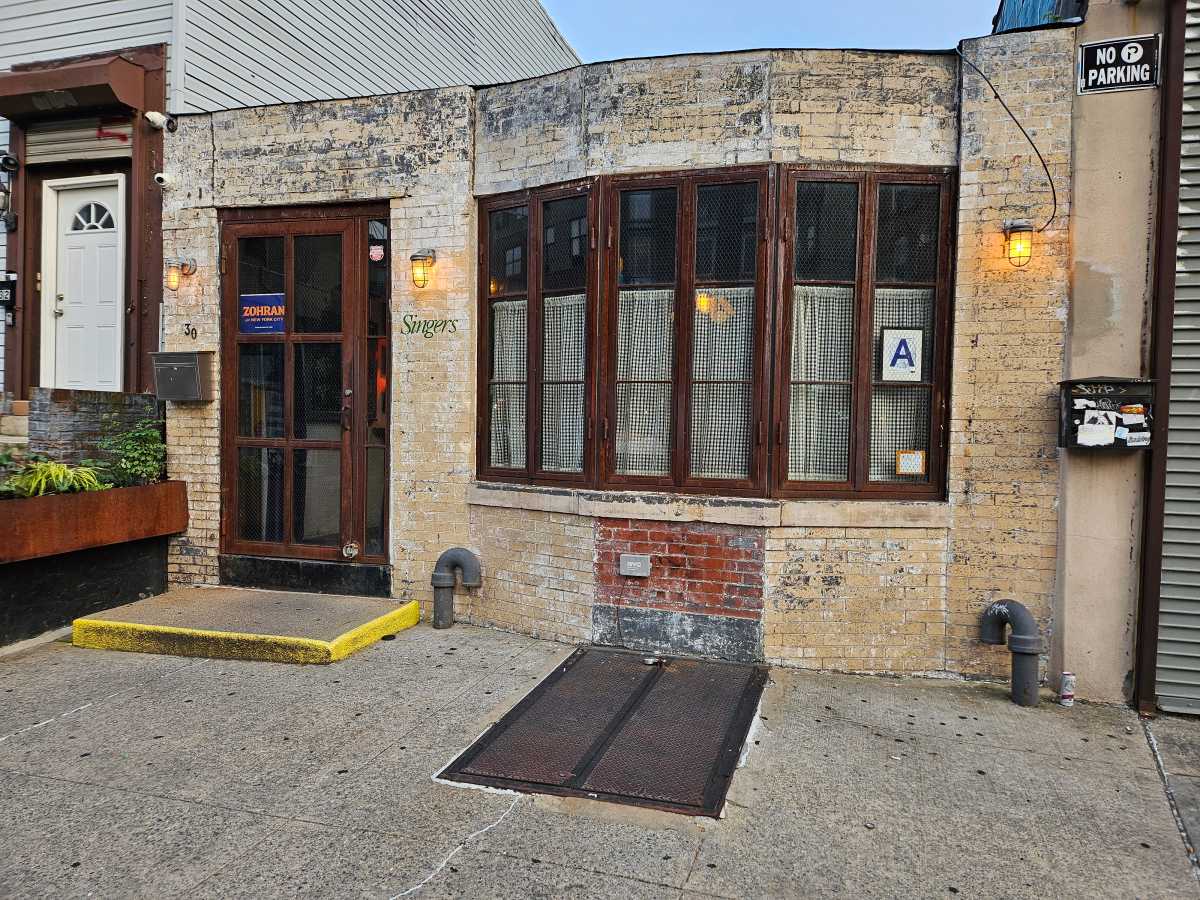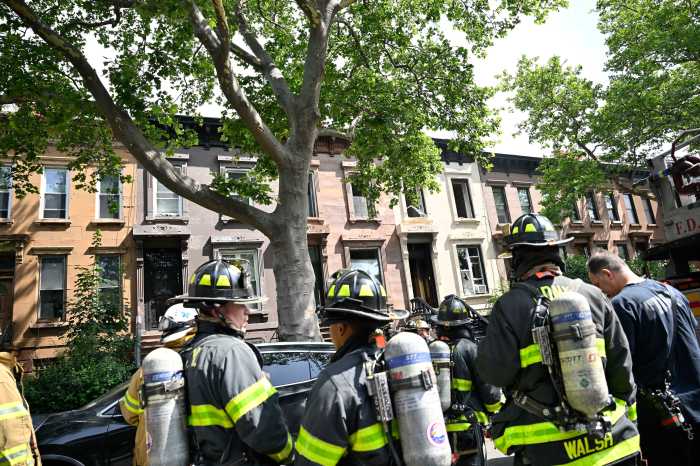BY SCOTT STIFFLER | In March of this year, public reaction to Jamestown Properties’ desired vertical expansion of Chelsea Market (which requires a zoning variance) came in like a lion — when the project’s proposed height and aesthetics were both met with widespread disapproval. Any hopes for 2011 to go out like a lamb were dashed two weeks ago — when Chelsea Now first published several significantly altered renderings and massing comparisons.
Since then, many of the project’s most vocal critics have acknowledged the updated design does address concerns expressed to Jamestown since the initial March unveiling. The bulk has been redistributed, thus altering the “perceived height” when viewed from Tenth Avenue. The levels are now at 184, 197 and 226 feet (from a previous height of 130, 210 and 250 feet). The redesigned exterior, and the addition of some greenery between levels, references both the neighborhood’s industrial past and the present High Line flora.
Despite these improvements, few if any hearts and minds seem to have been changed — setting the tone for several crucial, and potentially contentious, meetings scheduled for early 2012. Asked to weigh in on the current and upcoming public vetting process, Community Board 4 (CB4) Chair Corey Johnson said, “The board is pleased that the community has had an ample amount of time to weigh in before the ULURP [Uniform Land Use Review Procedure] process has even officially begun,” adding that he hopes debate surrounding the potential rezoning of Chelsea Market is, “done in a thoughtful and fair-minded way, to both the community and the applicant.”
Regarding the ULURP timeline, CB4 District Manager Robert J. Benfatto noted, “I’m told that the environmental [study] is not ready yet, so the earliest it would be [ULURP] certified would be January 23. If that’s the case, then the [CB4] Preservation and Planning Committee would hear it on February 23, and the full board would hear it on the first Wednesday in March.” Anticipating that process, Benfatto noted that, “We have asked Jamestown to meet with community groups and keep us in the loop as to how it went.”
Asked by Chelsea Now for their assessment of how the new design is being received by the community, Jamestown Properties managing director Michael Phillips asserted, “It seems as though many people appreciate the new design in as much as it is more in keeping with the existing structure. And, perhaps most importantly, most people seem to appreciate that Jamestown is willing to listen to various voices in the community and understand that the new design is a result of our listening to them.” Despite repeated requests, Jamestown declined to reveal the names of any “electeds and stakeholders” who’ve expressed favorable opinions regarding the new design.
It’s likely that Katie Kelly wasn’t among those reaching out to Jamestown with words of support. In an email sent to Chelsea Now, Kelly said of the new renderings, “Not one of them takes into consideration the original building they will be squatting on, much less the historic neighborhood the market is close to. This is a dreadful encroachment on the neighborhoods and the buildings that are fast being lost in New York City.” Jim Jasper, a member of the 300 West 15th Street Block Association, noted, “No one in our block association was impressed by the lopping off of one story in the new Chelsea Market plans. We remain opposed.”
Allen Oster, however, voiced support for the design, while asking opponents to contemplate how much the area would have already changed had the economy remained robust: “I find the new rendering a great addition to the ever-upward expansion of the Chelsea streetscape,” said Oster. “The building looks like it actually belongs there. Let’s roll back the years and think about all the buildings that would have been built had the market not tanked, i.e., Tenth Avenue between 17th and 18th, Tenth Avenue between 20th and 21st, and the 22nd Street Time Warner Building. Talk about casting shadows. The market [Chelsea Market] has been a major engine in the rejuvenation of the west side, and Jamestown has continued to improve on the original concept.”
Save Chelsea, however, doesn’t regard any ambitions to alter Chelsea Market as the stuff of improvement. “In spite of new renderings,” the group declared in an email, “Save Chelsea continues to oppose the proposed zoning change and expansion of Chelsea Market. While we appreciate that Jamestown has revised their architectural plans, it is very important to remember that this is first and foremost a land use and zoning issue. We continue to feel that the requested zoning change, designed to yield optimum views and maximum revenues for Jamestown, will have numerous negative impacts for the Chelsea community. These will include greatly increased traffic and congestion in a primarily residential area, already over-saturated with hotels and commercial enterprise. It must also be borne in mind that this expansion would be a door-opener for all subsequent developers seeking to short circuit existing zoning — zoning that is intended to preserve appropriate use and neighborhood character.”
David Holowka, a board member of Save Chelsea, expressed his disbelief that, “the Department of City Planning is said to be supporting these plans. Jamestown’s proposal is absolutely indefensible on urban planning merits. It would benefit the financial interests of a private owner at the expense of the common good, the very opposite of the purpose of zoning…The proposal stinks of greed and the corruption of urban planning by money. If it goes through, it’ll be a fine win for the one percent.”
The precedent set for future development, should the zoning variance be granted, was also on the minds of the neighborhood’s collective block associations. Bill Borock, president of The Council of Chelsea Block Associations (CCBA), said that for all the debate over economic benefit, aesthetic concerns and alterations to a historic building, “The major concern is zoning; the fact that you have a special Chelsea Historic District, and the attempt is being made to change the zoning so developers will make a profit. That isn’t the purpose of zoning laws. The feeling is that Jamestown, is making enough profit as is.” Borock continued, noting that after all CCBA members were polled, the organization voted to oppose Jamestown. “We opposed the original plan,” Borock recalled, “and we opposed the revised plans. If something is bad for the community, and someone makes it a little better, it is still bad for the community.”
Neil Selkirk, a member of the 500 West 19th Street Block Association, added, “The burden of proof surely must be overwhelmingly on the proposer of the zoning change to show that it is principally the public, both citywide and locally that will be the beneficiary of the change, otherwise why have zoning in the first place?”
Speaking on behalf of the West 15th Street 100 & 200 Block Association, Stanley Bulbach declared his organization’s support for the positions taken by the CCBA and Save Chelsea: “Any zoning variance for a still new zoning designation to permit further hyperdevelopment is damaging to the local infrastructure, which is already deteriorating and overtaxed,” noted Bulbach — who offered an alternative to the further development of Chelsea Market. “While Jamestown continues to seek a variance for additional construction, a virtually abandoned hole in the ground exists year after year on the north side of West 14th Street just east of 8th Avenue. And for almost half a decade, two semi-collapsed buildings have existed as eyesores dropping debris on the south side of West 14th Street just east of 7th Avenue. It is malpractice for city policy to consider hyperdevelopment in a newly protected area while abandonment blights our community nearby.”
Miguel Acevedo, president of Fulton Youth of the Future and the Fulton Tenant Association, has not wavered in his longstanding support of the Jamestown proposal. “It is sad that the community is not trying to work with Jamestown,” said Acevedo — who maintains that throughout this process, the opposition has wavered little despite alterations made on the basis of community feedback. “They [the opponents] are still not accepting. People are trying to prevent them [Jamestown] from doing anything. But they’re offering what nobody else is offering — employment. Everybody is building condominiums, and there are a lot of vacancies in these buildings going up on the Tenth Avenue corridor. Jamestown is trying to do something different, by putting in office space that’s going to create lots of opportunities for employment. Why should we not support something like that?”
Acevedo and other supporters from Fulton Houses are likely to be seen at the upcoming ULURP and CB4 meetings. Corey Johnson says he hopes those who attend this part of the process remain visible, and vocal, throughout the coming year. “I would encourage the public to continue to be engaged in this process even after CB4 makes their recommendation,” said Johnson — who noted the importance of bringing concerns to the Borough President, the City Planning Commission and the City Council.
































